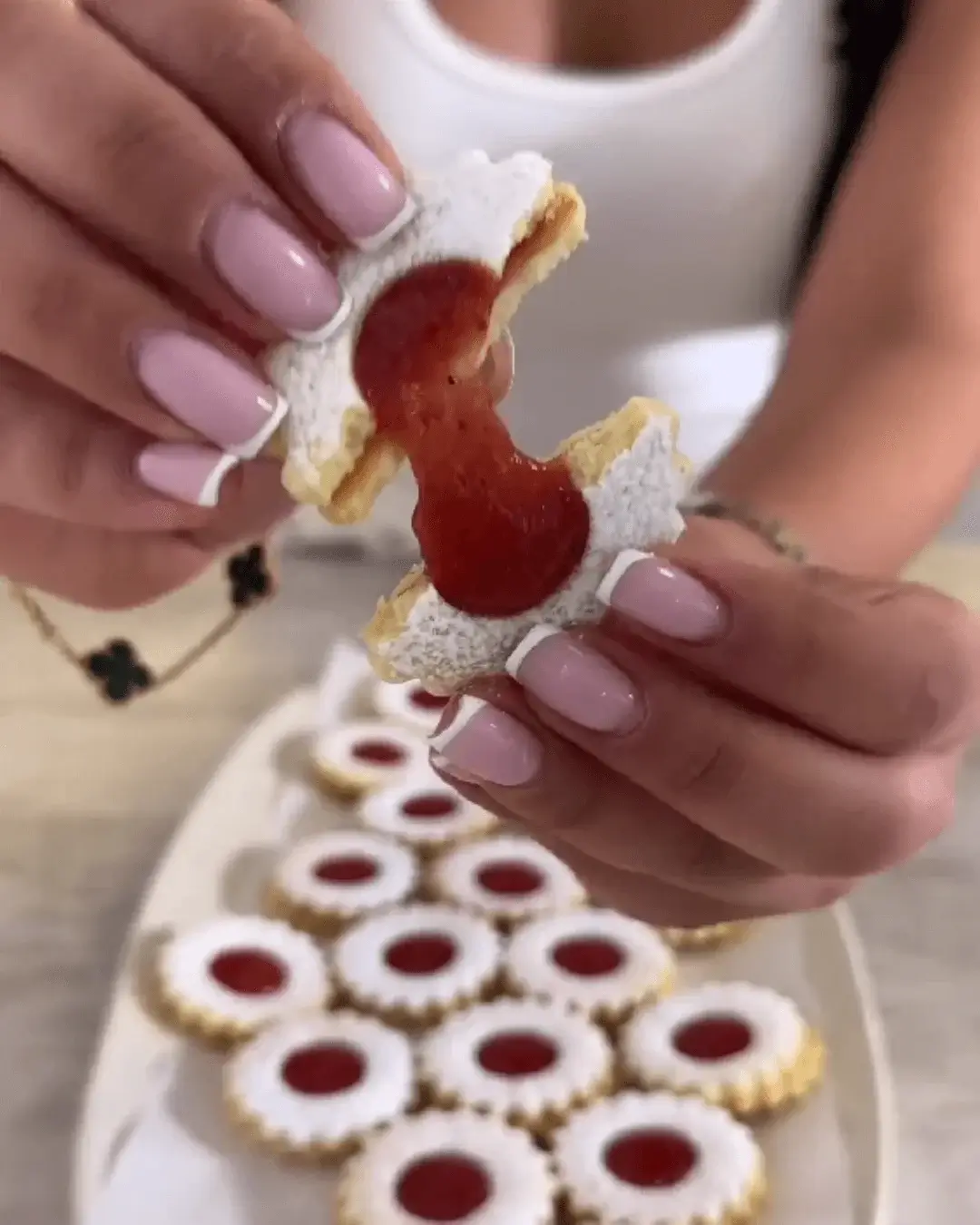Strawberry Jam Butter Cookies That Melt in Your Mouth
We may earn a commission from recommended products, at no extra cost to you. See Disclosure.
INGREDIENTS
- 7 ounces/200 grams butter
- ½ cup/60 grams powdered sugar
- 2 cups/260 grams flour
- 1 cup/130 grams cornstarch
- A pinch of salt
- 1 egg
- Strawberry jam
INSTRUCTIONS
- In a mixer bowl with a paddle attachment or in a food processor, combine cold butter cubes, powdered sugar, flour, cornstarch, and salt. Mix until the mixture resembles crumbs, like couscous. Add the egg and mix until a uniform dough forms.
- Divide the dough into two parts. Roll each part between two sheets of parchment paper and freeze for 10 minutes.
- Remove the dough from the freezer and peel off the parchment paper. Use a round or flower-shaped cookie cutter to cut out circles and place them on a parchment-lined baking tray. Cut out a small inner circle from half of the cookies using a piping nozzle.
- Preheat the oven to 350°F (180°C) on convection mode. Bake the cookies for about 12 minutes, until lightly golden.
- Let the cookies cool. Pair them up, matching one with a hole and one without. Pipe strawberry jam into the center of the cookie with the hole, and place the solid cookie on top to make a sandwich. Dust with powdered sugar.
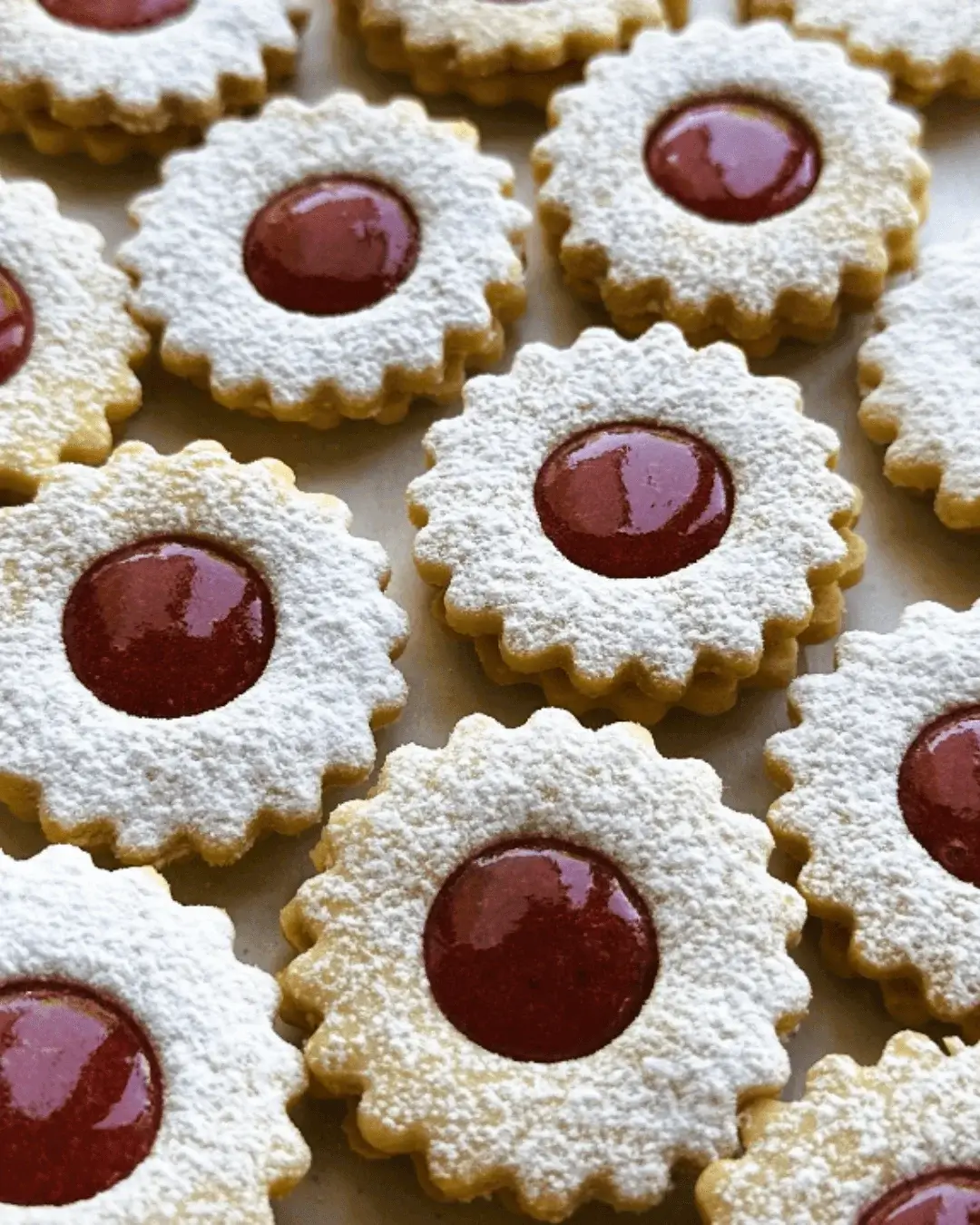
FAQ
What flour is best for these strawberry jam butter cookies?
For these strawberry jam butter cookies, use all-purpose flour for the best texture. All-purpose flour provides the right balance of gluten and starch, creating a tender and crumbly cookie that holds its shape well. Avoid using cake flour, which is too soft, or bread flour, which has too much gluten and can make the cookies dense. If you prefer, you can use a gluten-free all-purpose flour blend, but the texture might vary slightly.
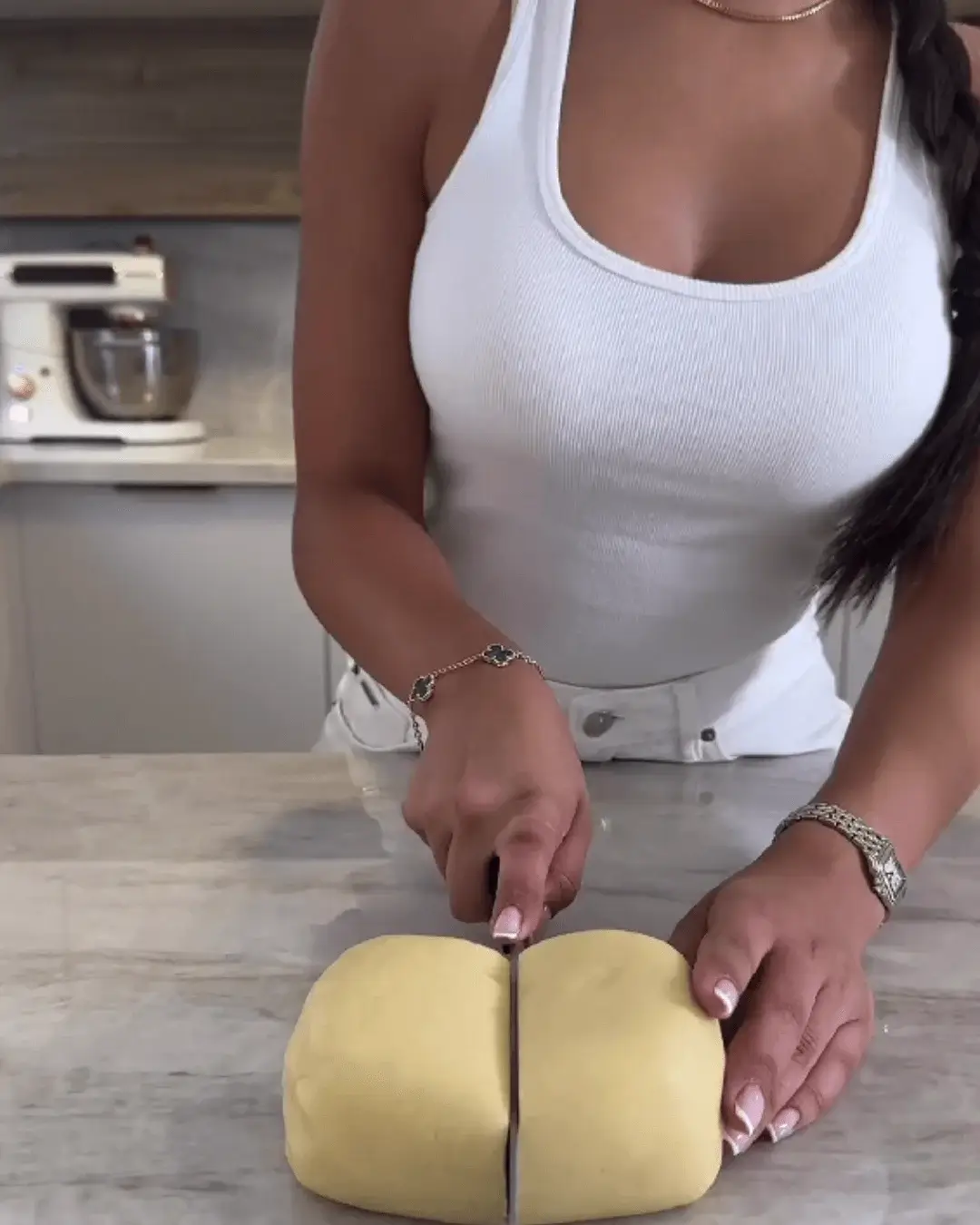
How do I store these strawberry jam butter cookies?
To store strawberry jam butter cookies, keep them in an airtight container at room temperature for up to one week. For longer storage, freeze the cookies in a single layer on a baking sheet, then transfer them to a freezer-safe container or bag. They can be frozen for up to three months. To thaw, simply leave the cookies at room temperature for about 30 minutes before serving. Be sure to keep them in a cool, dry place to maintain their freshness.

How to know if the strawberry jam butter cookies are ready
To know when your cookies are done baking, look for a light golden color around the edges. The centers should appear set but still soft. If using convection mode, the cookies may bake slightly faster, so keep a close eye on them. You can also gently touch the edges of a cookie; if they feel firm and don’t indent, they’re likely done. Avoid overbaking to keep the cookies tender and crumbly. Let them cool on the tray for a few minutes before transferring them.
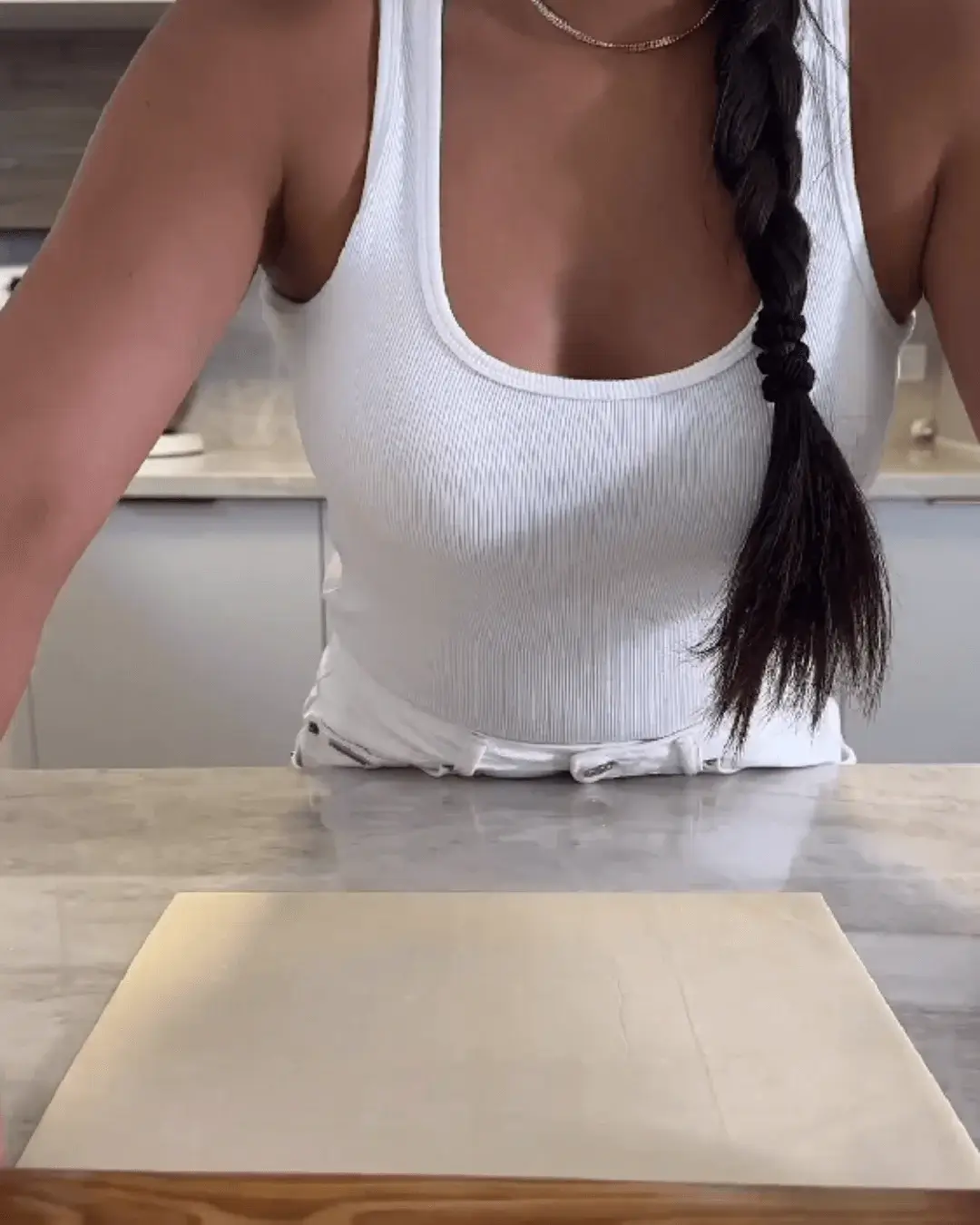
Can I make the dough in advance and freeze it?
Yes, you can make the dough in advance and freeze it. After preparing the dough, divide it into portions, wrap each in plastic wrap, and place them in an airtight container or resealable bag. Freeze the dough for up to three months. When ready to bake, let the dough thaw in the refrigerator overnight, then roll it out and cut the cookies as directed. Freezing the dough is a great way to have fresh cookies on hand whenever you want!
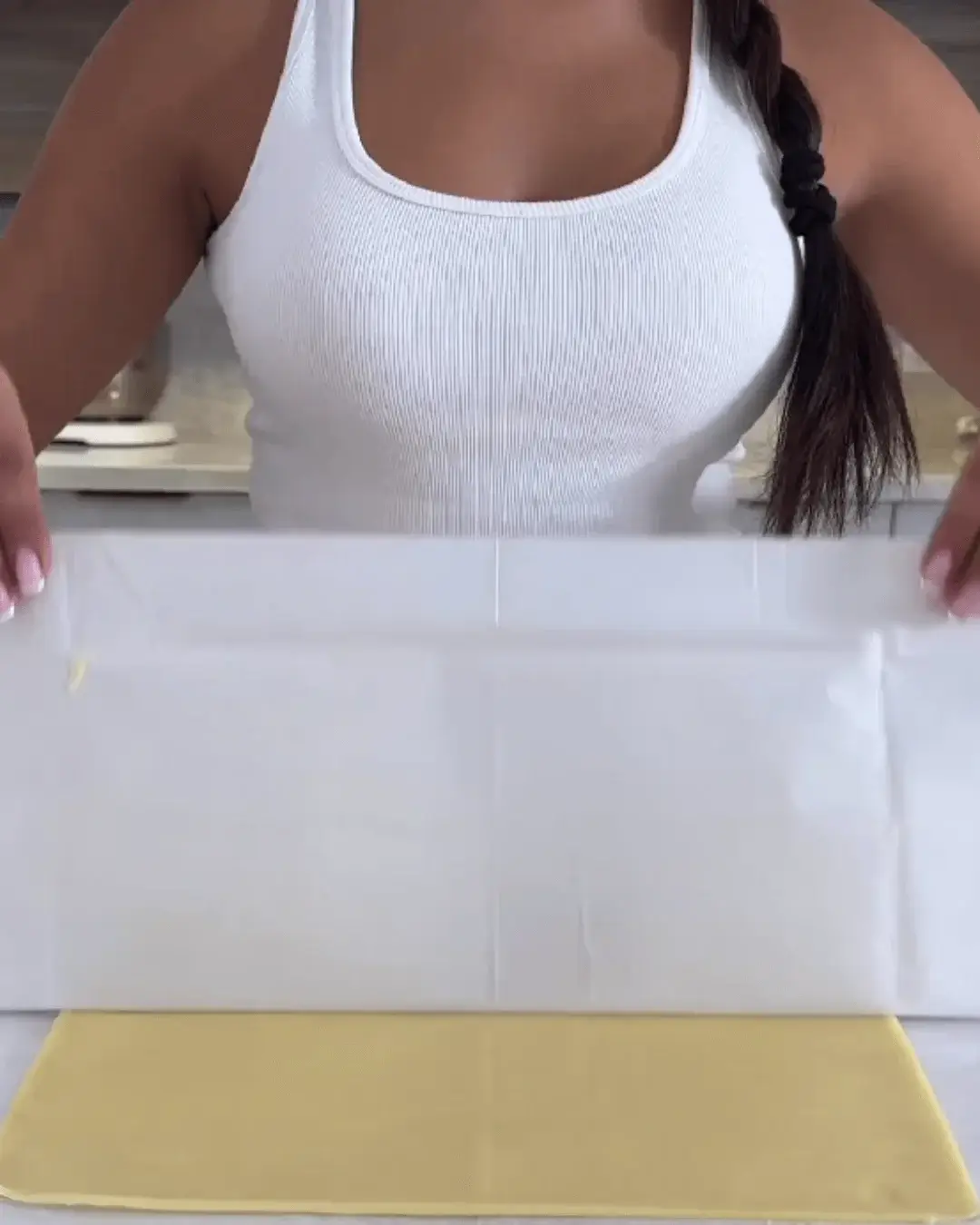
What can I use if I don’t have a cookie cutter?
If you don’t have a cookie cutter, you can use a variety of kitchen tools to shape your cookies. A drinking glass or a mason jar lid can cut out round cookies. For flower shapes, you can use a clean, unused bottle cap or the rim of a small glass. If you’re feeling creative, you can even freehand cut the dough with a knife. Just be sure to press down firmly and keep the shapes consistent for even baking.
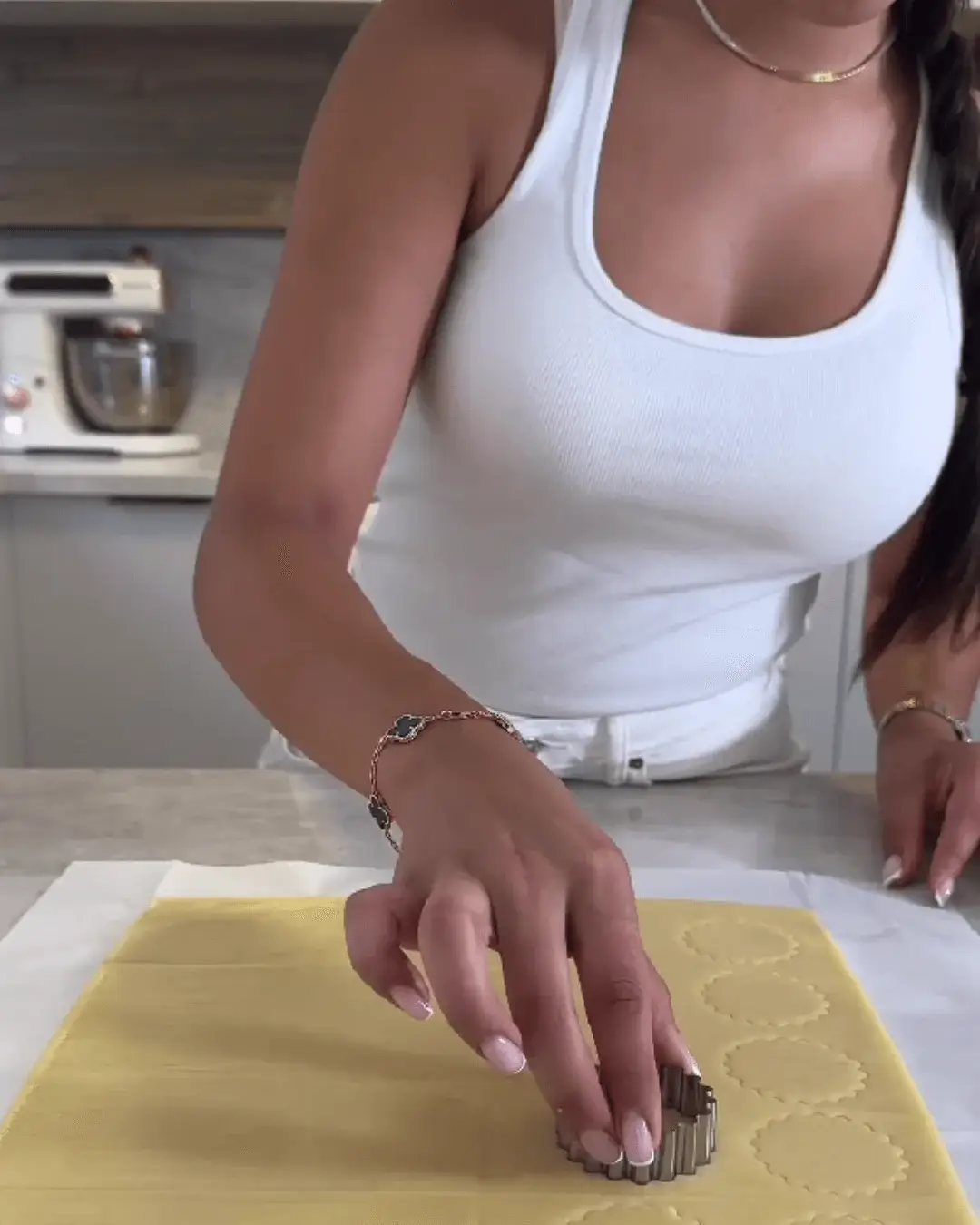
Is it necessary to sift the powdered sugar?
It’s not strictly necessary to sift powdered sugar for this recipe, but doing so can improve the texture of your cookies. Sifting removes any lumps and ensures that the powdered sugar mixes evenly with the other ingredients. If you don’t sift, you might end up with small clumps of sugar in the dough, which can affect the final texture. If you don’t have a sifter, you can also whisk the powdered sugar to break up lumps.
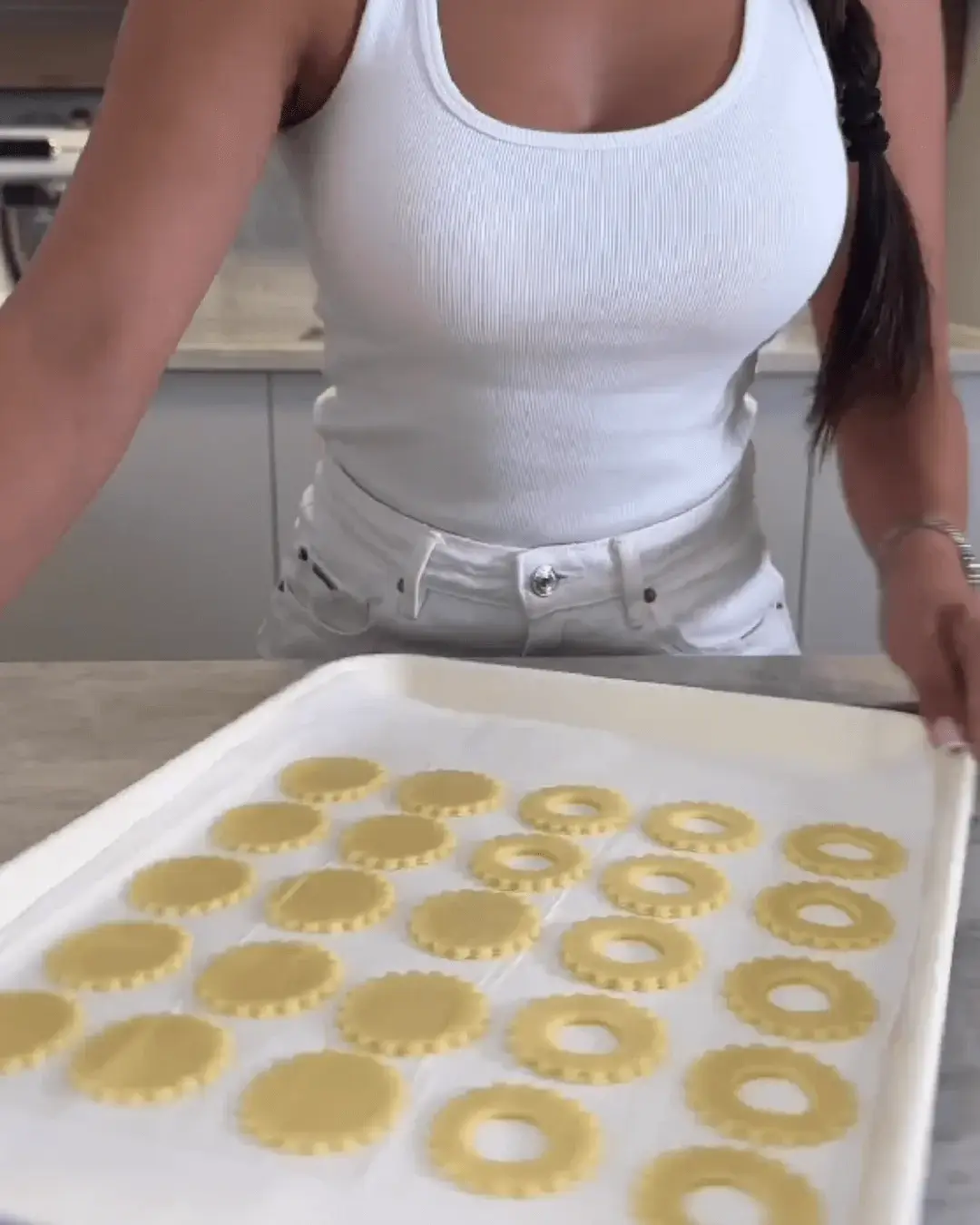
How thick should I roll out the dough?
Roll out the dough for these cookies to about 1/8 inch (3 mm) thick. This thickness ensures the cookies are crisp yet tender, with a nice balance of texture. If the dough is rolled too thin, the cookies may become overly crispy or fragile. If rolled too thick, they might not bake evenly and can be too soft. Using a rolling pin with adjustable guides or a dough thickness guide can help achieve consistent results.
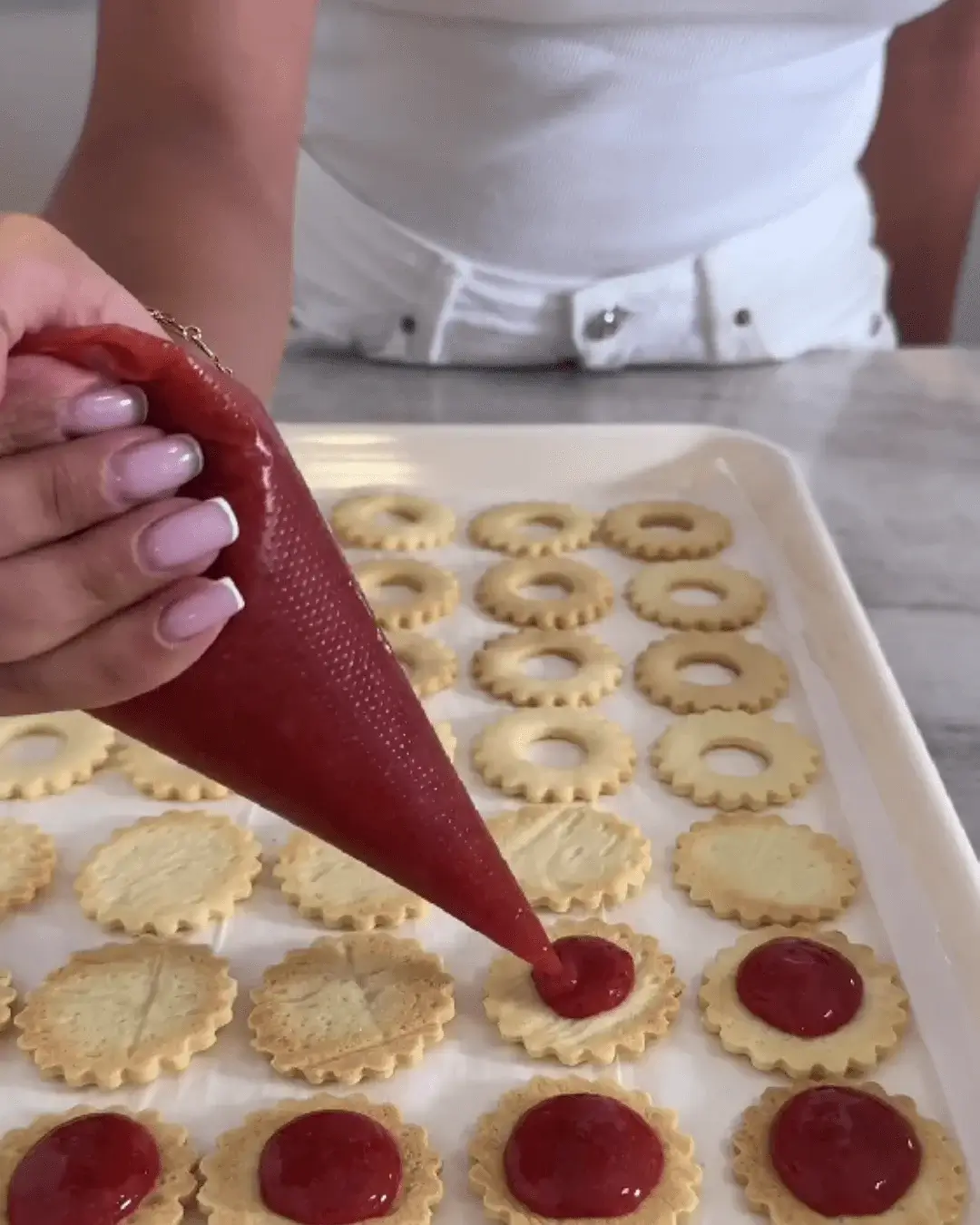
Can I substitute cornstarch with another ingredient?
Yes, you can substitute cornstarch with other ingredients if needed. Arrowroot powder, potato starch, or tapioca starch are good alternatives that will provide a similar texture and stability to the cookies. You can also use all-purpose flour, though it may slightly alter the texture and crumb. If using flour, consider reducing the amount slightly to avoid making the dough too dense. Make sure to choose a substitute based on your dietary needs and the texture you desire for your cookies.
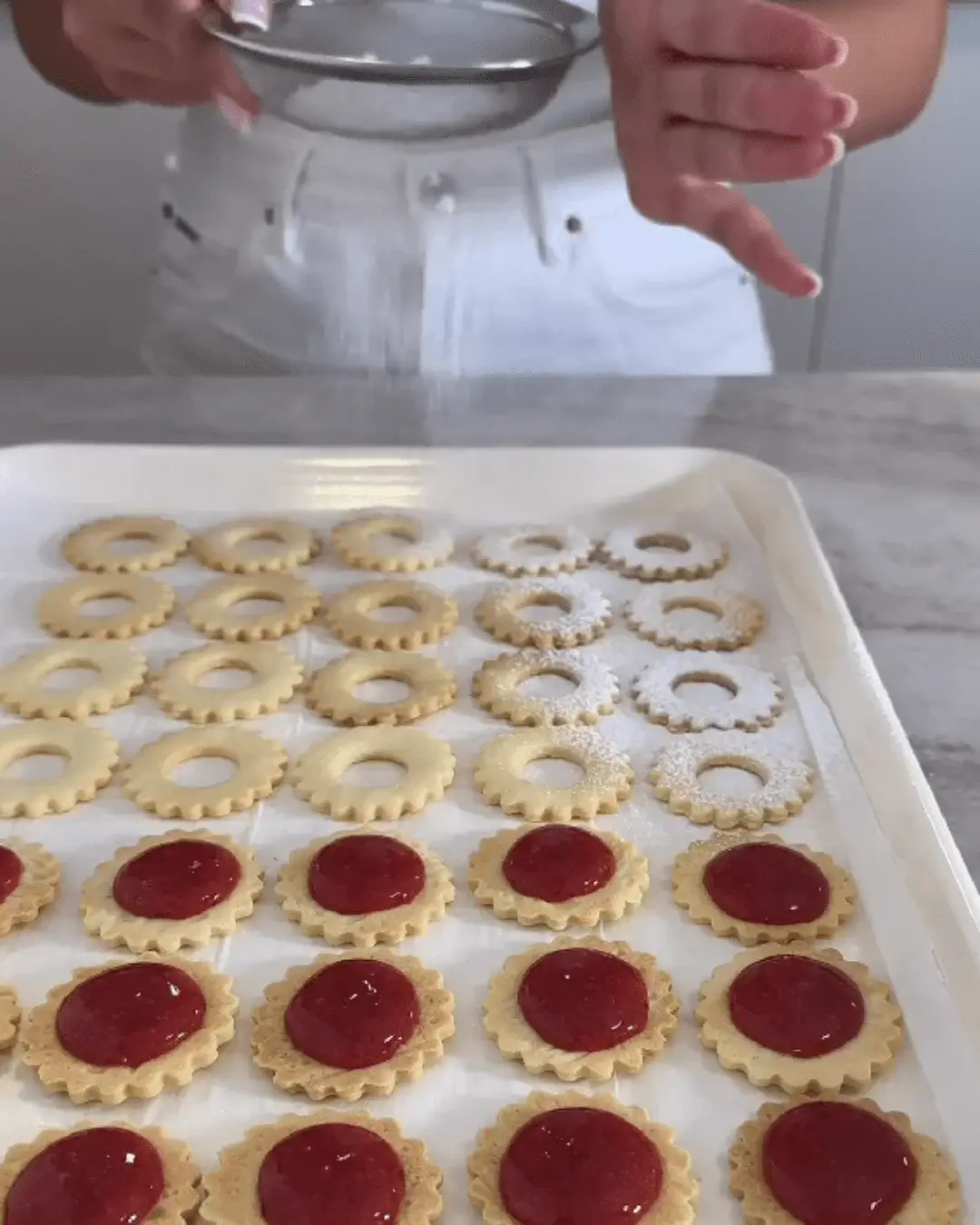
How do I achieve a uniform dough consistency?
To achieve a uniform dough consistency, mix your ingredients until just combined. Start by cutting the butter into flour, cornstarch, and powdered sugar until the mixture resembles coarse crumbs. Then, add the egg and mix until the dough forms a smooth, even texture. Avoid over-mixing, as this can lead to a tough dough. If the dough feels too dry, add a small amount of milk or water, one teaspoon at a time, until it comes together evenly.
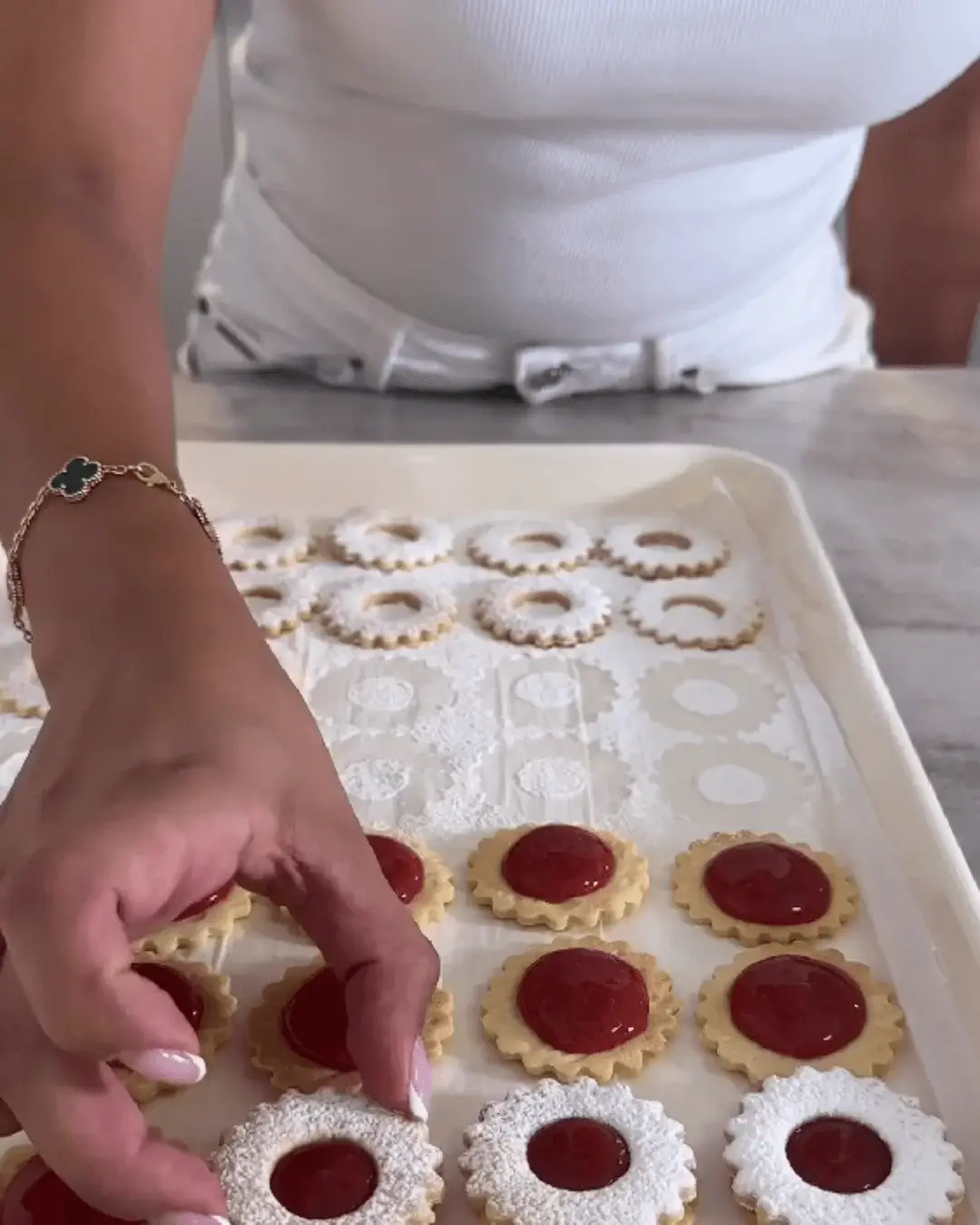
What can I do if the dough is too sticky or too dry?
If the dough is too sticky, add a little extra flour, one tablespoon at a time, until it reaches the right consistency. If the dough is too dry, add a small amount of milk or water, one teaspoon at a time, until it becomes smooth and workable. Ensure you handle the dough gently and avoid adding too much flour or liquid, as this can affect the cookie texture. Chilling the dough can also help manage stickiness.
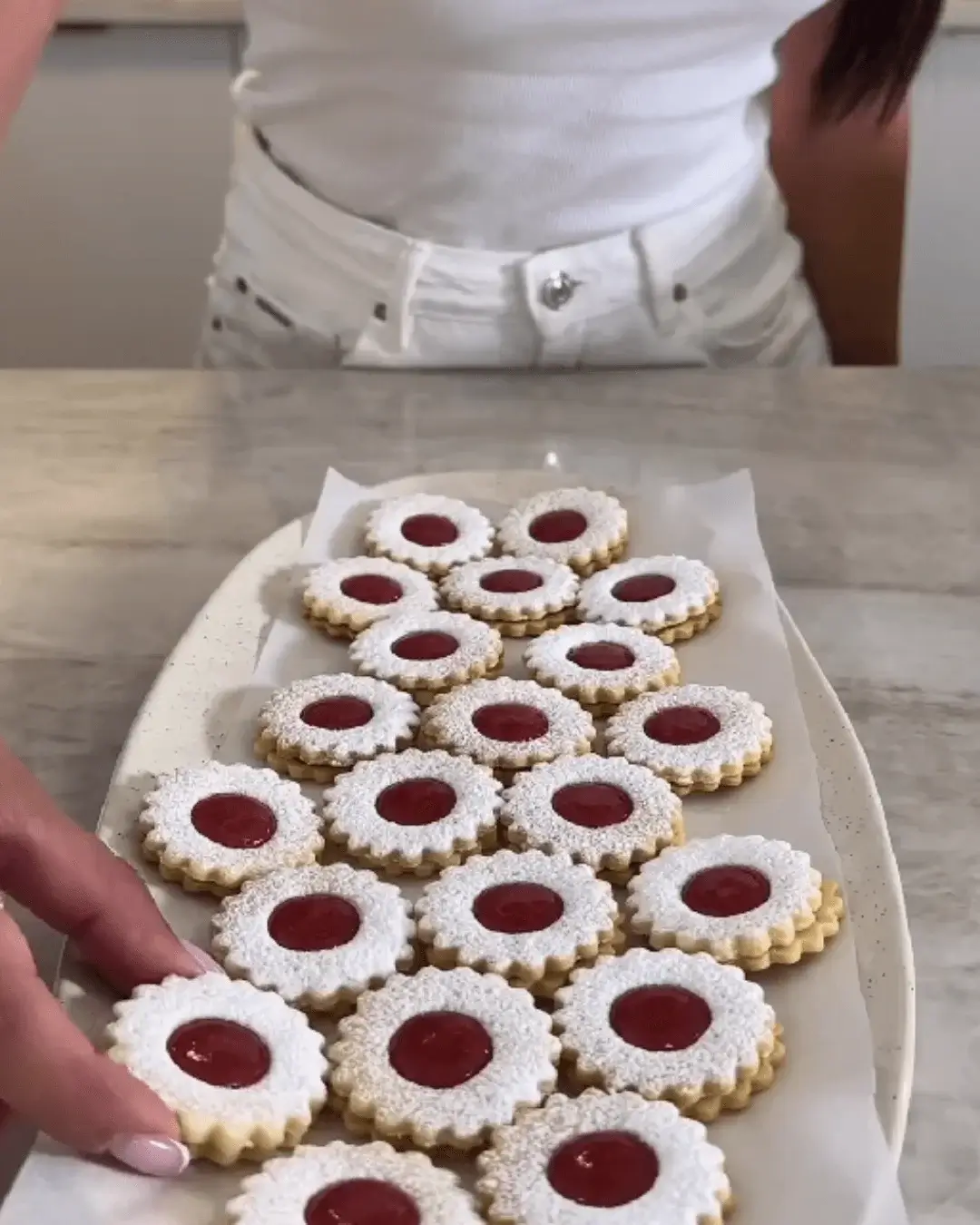
Can I use a different filling for these cookies?
Yes, you can use a different filling for these strawberry jam butter cookies. Try chocolate ganache, lemon curd, or peanut butter for a tasty twist. You can also use flavored cream cheese or sweetened fruit preserves as alternatives. If using a different filling, ensure it has a similar consistency to jam so it pipes well and stays in place. Experimenting with various fillings can create new and delicious cookie variations to enjoy or share with others.
